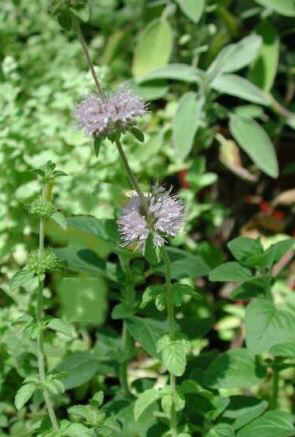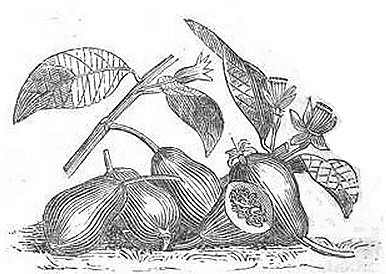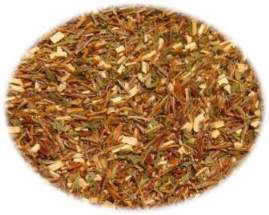Contents
- 1 MEDICINAL PROPERTIES OF PENNYROYAL
- 1.1 PENNYROYAL REMEDIES FOR INTERNAL USE
- 1.2 Pennyroyal tea is a very good remedy for the digestive system
- 1.3 Pennyroyal, a medicinal herb for respiratory diseases
- 1.4 Other preparations with pennyroyal for internal use
- 1.5 PENNYROYAL ESSENTIAL OIL AND DECOCTIONS FOR EXTERNAL USE
- 1.6 Pennyroyal preparations to cure the skin lesions
- 1.7 How safe is pennyroyal. Can pennyroyal be dangerous?
- 1.8 OTHER USES OF PENNYROYAL
- 1.9 Natural repellent of lice, fleas, flies and mosquitoes
- 1.10 Natural repellent of fleas, flies, mosquitoes and ticks in dogs and cats
- 1.11 Other species of pennyroyal and mints
MEDICINAL PROPERTIES OF PENNYROYAL
PENNYROYAL REMEDIES FOR INTERNAL USE
Pennyroyal tea is a very good remedy for the digestive system
The beneficial properties of pennyroyal for the digestive system have been praised since antiquity. Among the main properties, we can mention the following:
 – Carminative: Its content in carvacrol, thymol and menthol help expel excess gas in the intestine, (Infusion of 2 tablespoons of dried leaves (or twice of tender leaves) in a liter of water Take a couple of cups a day. Do not exceed this amount)
– Carminative: Its content in carvacrol, thymol and menthol help expel excess gas in the intestine, (Infusion of 2 tablespoons of dried leaves (or twice of tender leaves) in a liter of water Take a couple of cups a day. Do not exceed this amount)
– Stomachic: Most terpenes confer pennyroyal antispasmodic properties, whereas rosmarinic acid and salicylic together with carvacrol, limonene and cineol acids give antispasmodic properties. All this makes it very interesting in the treatment of stomach pains caused by indigestion when suffering stomach cramps from colic or excessive flatulence. The use of this plant helps soothe the body. (Take the previous treatment)
– Choleretic: Pennyroyal has the ability to stimulate the liver increasing the secretion of bile, which is being used to help promote digestion.
However, this plant contains pulegone and isopulegone two principles very toxic to the liver, so the plant must be taken with caution, without exceeding the recommended dosage and only from time to time.
For regular use, it is better to use other mints as effective as pennyroyal without the toxicity of this plant. In this sense it would be better to use peppermint.
Pennyroyal, a medicinal herb for respiratory diseases
Pennyroyal is considered a very good remedy for respiratory problems. It is rich in menthol, a component with diaphoretic properties, that is to say, it increases the production of sweat.
This property has been used in the treatment of cold and flu as it is able to reduce fever by evaporation of body heat. We must not forget that menthol also has antipyretic properties and, besides, this plant contains salicylic acid, the principle of aspirin, a painkiller and fever diminisher.
Pennyroyal Mint is also a good expectorant for its mucolytic properties. It helps dissolve mucus in the bronchi and facilitates its expulsion.
This determines that it can be used in the treatment of bronchitis. Here again, we must emphasize the importance of menthol and thymol. (Infusion of 2 tablespoons of dried leaves or twice tender leaves in a liter of water. Take a couple of cups a day. Do not exceed this amount)
Other preparations with pennyroyal for internal use
- Altitude sickness: Pennyroyal contains rosmarinic acid and eugenol, both with anticoagulant properties that can help improve blood circulation and prevent or ameliorate the symptoms of mountain sickness (Infusion of a teaspoon of dried plant per cup of water Take a couple of cups a couple of days before making the trip to the mountains or the ascension)
- Woman diseases: The thujone content of pennyroyal favors the expulsion of blood in difficult menstruation, so it has been considered as an herb with emmenagogue properties that could be used in cases of amenorrhea or dysmenorrhea. (Drink the previous preparation)
- Pain: The soothing properties of thymol and salicylic acid can be exploited in the treatment of joint pain caused by rheumatic diseases in nature, such as rheumatoid arthritis. (Infusion of 2 tablespoons of dried leaves (or twice of tender leaves) in a liter of water. Take a couple of cups a day. Do not exceed this amount)
PENNYROYAL ESSENTIAL OIL AND DECOCTIONS FOR EXTERNAL USE
Pennyroyal preparations to cure the skin lesions
Used externally, pennyroyal contains many astringent principles (tannins, flavonoids, zinc and formic acid.) These posses vulnerary properties, that is to say, they are able to cure skin lesions. This, coupled with the antibacterial properties which provide more than 25 components, make pennyroyal one of the best natural remedies for the treatment of skin conditions. It can be used for the following problems:
- Injuries: The liquid resulting from the decoction of 3 tablespoons of dried pennyroyal leaves in a liter of water can be applied with gauze on a wound or cut to disinfect and promote healing. You can also use a few drops of essential oil diluted in water used. (Do not apply the essential oil to the skin undiluted)
- Itching: The above preparation, applied on the skin, helps reduce itching, producing a feeling of relief and freshness.
- Insect bites: The anti-inflammatory, antiseptic and astringent properties of pennyroyal are adequate to relieve itching and reduce swelling caused by insect bites such as bees, lice, fleas, ticks, mosquitoes, mosquito tiger, etc.
- Eczema: Also, this remedy applied on eczema, help improve skin health.
- Hemorrhoids: astringent, anti-inflammatory and vulnerary properties of this plant are useful in the treatment of external hemorrhoids. Topical application can help reduce inflammation and prevent itching. (Washes with the decoction of 30 g. of dried plant per liter of water)
- Female genital problems: Pennyroyal mint has over 20 ingredients with antiseptic properties (menthol, thymol, cineol, carvacrol, sabinene, alpha-pinene, pinene, etc.,) that in external use, can be used to treat vulva and vagina infections eliminating the microorganisms that cause infection and relieving itching (vulvitis, vulvovaginitis, vaginitis, vaginal discharge) (Washes with the decoction of 30 g. of dried plant per liter of water)
How safe is pennyroyal. Can pennyroyal be dangerous?
Pennyroyal is a plant that contains many principles which, exceeded the permitted dose, are extremely toxic. It is especially important to know how to use its essential oil.
A dose of 10 grams of dried herb per liter of water can cause poisoning. There have been cases of pennyroyal poisoning by ingestion of the plant at high doses as an abortifacient (Pennyroyal is contraindicated in pregnancy).
* More information on the subject in “Pennyroyal toxicity”.
OTHER USES OF PENNYROYAL
Natural repellent of lice, fleas, flies and mosquitoes
The Romans burned this plant because they believed that the smoke expelled these insects away from home. They even believed that it actually killed fleas.
Today, although most of us do not dispose of a fireplace to burn this plant and prevent or repel the attack of skin parasites (especially fleas, flies, lice and mosquitoes), we can also use pennyroyal for this purpose. By means of scrubbing a branch of this plant on our body, we will make them move away or they will not dare to approach.
Another good way is to make a decoction of a couple of tablespoons of dried leaves, introducing the liquid into a spray bottle and fumigate the area where we are. Thus, we will achieve a good natural repellent.
If we happen to walk in the countryside, in a place infested with mosquitoes or fleas, we can scrub the previous preparation on some parts of the skin to prevent these parasites to come.
Natural repellent of fleas, flies, mosquitoes and ticks in dogs and cats
For pets, a good way to prevent fleas from attacking dogs, cats or other animals is to make a collar with the branches and leaves of this plant or introduce some leaves in a cloth bag.
Placed on the neck as a garland or as a hanging bag, it will scare fleas, prevent our pets from being harassed by flies and mosquitoes and will constitute an obstacle for our pets to be contaminated by ticks. At the same time, it will provide the animal in question a very pleasant aroma.
Undoubtedly, synthetic repellents on the market sell cheap and they are easy to apply, but the former remedy is much more environmentally friendly and can be applied immediately if we can pick up a piece of this plant in our country walks.
Other species of pennyroyal and mints
The genus Mentha is constituted by many very similar species and, most often, very difficult to classify. The reason is because the ability to hybridization or interbreeding between different species.
- American pennyroyal (Hedeoma pulegoides): It is also known as pennyroyal. It is a North American annual herb with similar properties with European pennyroyal mint.
American pennyroyal has been used by native Indians in a usual manner for the same purposes. At present extracts of this plant take part in the composition of many drinks, giving them its characteristic aroma.
The FDA (US Food and Drug Administration) considers that this plant contains principles that can be dangerous to health, so it discourages the use of any preparation made with this herb both in internal and external use.
- Peppermint (Mentha x piperita): It is a hybrid between spearmint (Mentha spicata = Mentha viridis) and water mint (Mentha aquatica). Most often used as mint infusion for its digestive, expectorant and soothing properties. In external use it is antiseptic and anti-inflammatory. In addition to its use as a medicinal, peppermint is most often used as a cooking herb.
- Round-leaved mint (Mentha rotundifolia) Although its aroma is not so nice, its properties are similar to the previous one. It is one of the most primitive and original mints not produced by hybridization (see complete study of the plant)
- Mint, spearmint (Mentha spicata = Mentha viridis). It is mainly characterized by its spiky leaves not having petiole. It has similar properties to other mints.
- Water mint (Mentha aquatica): It can reach 2 m high. It is used as a diuretic, soothener and stomachic.
- Horse mint = wild mint (Mentha longifolia = Mentha sylvestris) Distinguished by its long terminal spike, its properties are very similar to all the mints. It is the species most used for essential oil. Its properties are similar to other mints though its smell is less prominent.
![]() More information on penny royal.
More information on penny royal.








